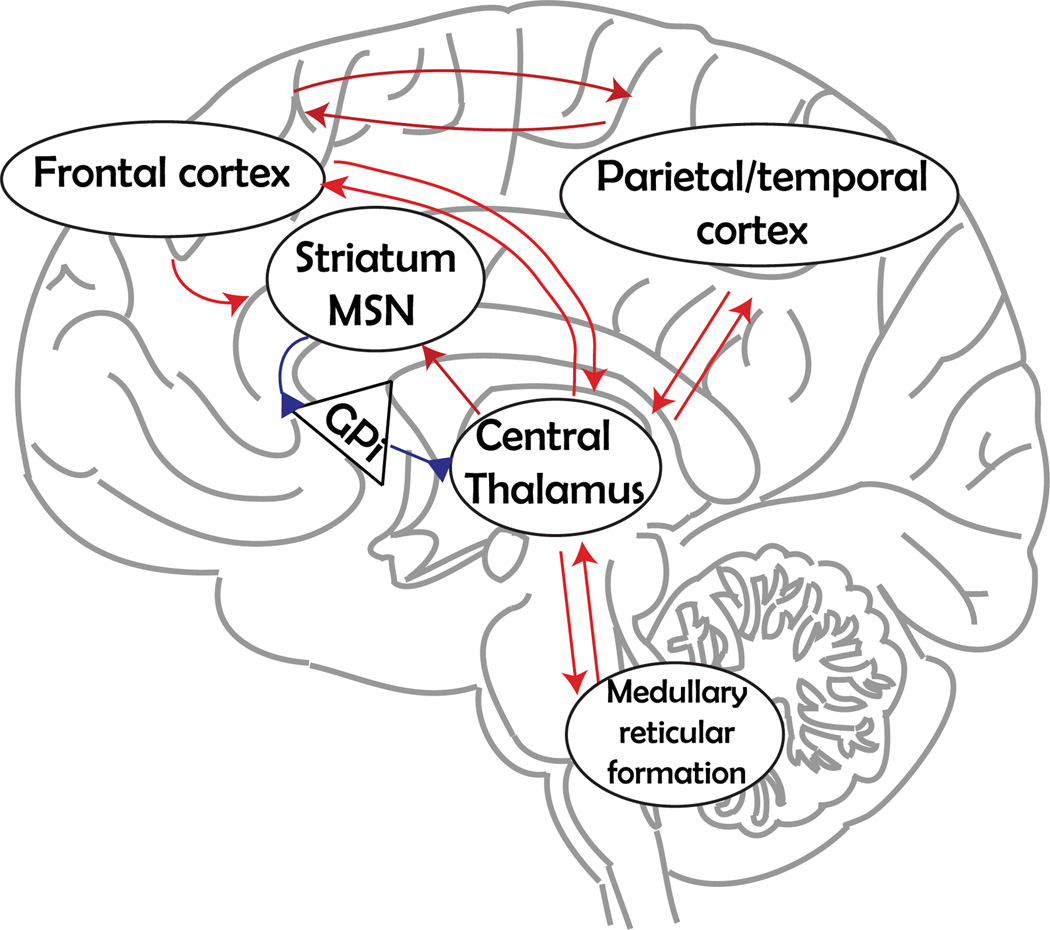Fig. 2.
Anterior forebrain mesocircuit. The schematic shows important cortical and subcortical components of the anterior forebrain mesocircuit, based on the work and thinking of Nicholas Schiff (Schiff, 2013). Projections from the central thalamus innervate the prefrontal and frontal cortex, particularly supplementary motor area and anterior cingulate. These medial frontal regions in turn provide broad, feedforward projections to the prefrontal and frontal cortices. In addition, the same central thalamic neurons provide thalamo-striatal projections to medial spinal neurons (MSN) in the striatum, which send inhibitory projections to the globus pallidus interna (GPi) (blue synapses). This inhibition prevents potential central thalamus inhibition and therefore a shutdown of the anterior forebrain. Spontaneous recovery and pharmacological manipulations known to be effective in some severely brain-injured patients strongly modulate activity across the forebrain mesocircuit (Schiff, 2013).

